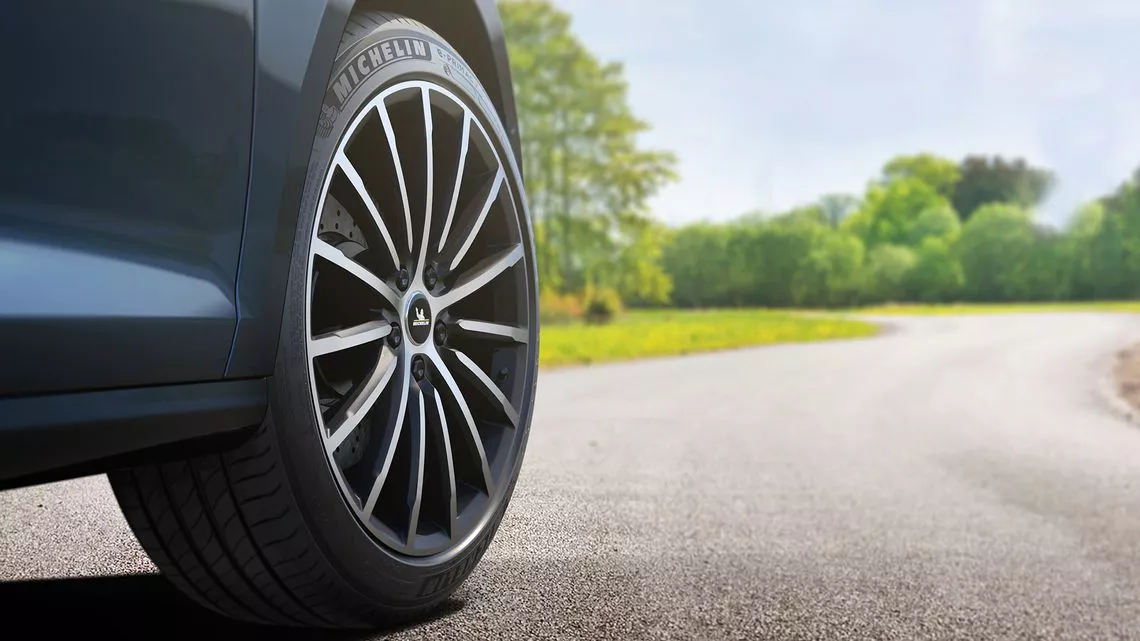Your car’s tyres are essential for grip, stability, braking, and overall road safety. However, many drivers in India unknowingly drive with worn-out tyres, risking reduced performance, poor mileage, and even accidents. Recognizing the early signs of tyre wear can help you avoid sudden blowouts, improve fuel efficiency, and maintain a comfortable ride.
In this guide, we’ll walk you through the most important signs of worn-out tyres and when you should replace them.
1. Low Tread Depth
Tread depth is the most obvious indicator of tyre wear. The deeper the tread, the better the tyre can grip the road—especially in wet or uneven conditions.
- A new tyre typically has a tread depth of 8–9 mm.
- The minimum legal tread depth in India is 1.6 mm.
How to Check:
Use a tread depth gauge or the coin test:
- Insert a ₹1 coin into the tread. If you can see most of the Ashoka pillar, it’s time to replace the tyre.
Why It Matters:
Low tread reduces traction, especially on wet roads, increasing the risk of skidding or aquaplaning.
2. Uneven Tyre Wear
If some parts of the tyre are more worn than others, it’s a clear sign of misalignment or imbalance.
- Center wear indicates over-inflation.
- Edge wear points to under-inflation.
- One-sided wear usually means poor wheel alignment.
- Cupping or scalloped wear could be due to a damaged suspension.
Why It Matters:
Uneven wear shortens tyre life and leads to poor handling and reduced safety.
3. Visible Cracks, Cuts, or Bulges
Inspect the tyre sidewalls regularly.
- Cracks or cuts could lead to slow leaks or sudden failure.
- Bulges or bubbles mean the internal structure is compromised—usually from hitting potholes or curbs.
Why It Matters:
Any damage to the tyre’s structure is dangerous and calls for immediate replacement.
4. Excessive Vibration While Driving
If you feel unusual vibration through the steering wheel or floor:
- It may indicate an unbalanced tyre, uneven wear, or internal damage.
- Also check for issues with suspension or wheel alignment.
Why It Matters:
Ignoring vibration can damage the tyre, suspension, and bearings, increasing repair costs.
5. Frequent Loss of Air Pressure
If a tyre loses air faster than usual, even after refilling:
- There may be a slow puncture, valve leak, or bead damage.
- Old, worn tyres are more prone to leaks.
Why It Matters:
Low tyre pressure reduces mileage and increases wear, making the car unsafe to drive.
6. Tyre Age – More Than 5–6 Years Old
Even if the tread looks okay, rubber degrades over time.
- Check the manufacturing date on the sidewall (in DOT format, e.g., 2820 = 28th week of 2020).
- Replace tyres that are more than 5–6 years old, regardless of usage.
Why It Matters:
Old rubber loses flexibility and grip, increasing the chance of cracks, hardening, and reduced traction.
7. Poor Braking or Grip
If you notice longer stopping distances, especially on wet roads, your tyres may have lost their effectiveness.
- Worn-out tyres reduce the braking performance and cornering stability.
- This can be dangerous during emergency stops or sudden turns.
Why It Matters:
A few extra meters in braking distance could be the difference between a close call and an accident.
8. Hydroplaning on Wet Roads
If your car feels like it’s floating or skidding on wet roads:
- The tyres may have insufficient tread to channel water away.
- It’s a major red flag for replacement.
Why It Matters:
Aquaplaning can cause you to lose control entirely, especially at high speeds.
Final Thoughts
Your tyres do much more than carry your car—they’re a critical safety component. Ignoring the signs of worn-out tyres puts you, your passengers, and other road users at risk. Regular inspections, proper inflation, and timely replacements ensure your vehicle performs at its best.
If you’re unsure about the condition of your tyres, visit a professional tyre service center for an inspection. It’s a small step that can make a huge difference in your driving safety.

